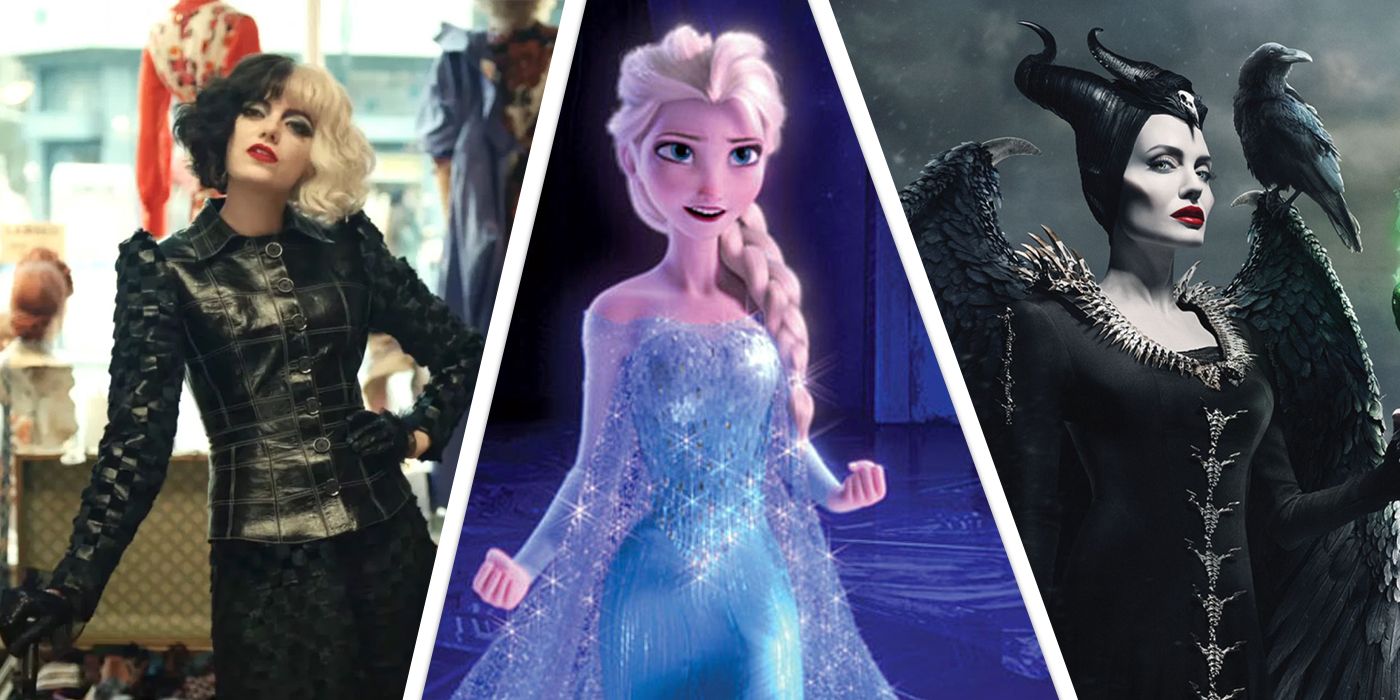Frozen: Why Elsa Is Still Disney's Best "Evil Queen"

Elsa from Frozen remains Disney's best take on an evil queen as a main character, despite numerous other attempts over the last decade. The hit franchise is another fairytale adaptation; Elsa is based on Hans Christian Andersen's "The Snow Queen," but Frozen flips the script by making her a sympathetic hero. This is a stark contrast to the Disney tradition started by Snow White, in which the villain, The Evil Queen, is unredeemable and two-dimensional. The animated feature was the first in a trend of Disney blockbusters that focus on a traditionally "evil" female villain; however, Elsa is still the most successful attempt.
Frozen was a phenomenon when it debuted in 2013, being both a massive commercial and critical hit. It was followed by Maleficent in 2014, which also took an Evil Queen villain — Maleficent, the main antagonist from 1959's Sleeping Beauty — and made her a sympathetic protagonist. Maleficent was a hit but received a mixed commercial reception. Sequels for both properties were greenlit, with Maleficent: Mistress of Evil and Frozen II debuting approximately a month apart in October and November 2019. Cruella would follow in 2021: like Maleficent, the live-action adaptation was a commercial success (at least according to Disney) but failed to win over critics.
All three franchises — Frozen, Maleficent, and Cruella — offer a fresh take on an evil queen, but only Elsa won over both fans and critics. Both of the live-action films were in development before Frozen debuted, so they weren't directly influenced by the animated film's success; still, the thematic connection between the three is undeniable. Elsa in Frozen is the most traditional queen, but more importantly, she gets a proper redemption arc. The problem with the other two "queens" is that their origin stories necessarily need to be the opposite — rather than transforming into heroes, they need to believably be on the path to assume their evil villain persona down the road.

Both Cruella and Maleficent were criticized for uneven storytelling and tone (particularly the former); given the almost impossible narrative premise both movies are in, this was almost certainly unavoidable. Since Cruella and Maleficent are origin stories from an antagonist's perspective, the movies need to make their titular character sympathetic and likable; however, the story also needs to set up the circumstances by which the characters become their villainous counterparts in Sleeping Beauty and 101 Dalmatians. Largely, the live-action prequels fail in this regard. Maleficent had the most success by showing Angelina Jolie's version of the evil fairy transform into her villainous counterpart through trauma and past heartache, but it fundamentally revised aspects of the Sleeping Beauty story in the process. Cruella struggled with its heroine even more so, to the point where it is impossible to imagine Emma Stone's version of the character ever wanting to skin puppies — literally her most basic motivation in 101 Dalmatians.
It's progressive for Disney to revisit some of these old stories that present problematic villains; however, the strategy of offering revisionist takes on female antagonists is not a winning one. Since Frozen wasn't a prequel, Elsa had an organic character arc that continued with her becoming the "Fifth Spirit" in Frozen 2. The franchise can grow and develop, taking into account the movie's reception and contemporary trends. The movie also more directly confronts the conventions of the genre: Elsa doesn't retreat because of scorned love or jealousy, and the "true love" in the story is that between estranged sisters. Maleficent follows a similar trajectory, but less convincingly — after all, Stefan's betrayal of his former "true love" is what sets Maleficent on her evil path. Cruella may not have a love story, but it falls into a different set of genre trappings: it revises its evil (fashion) queen by having her face the even more loathsome Baroness. Where Frozen promotes sisterly love, Cruella reverts back to female rivalry as its primary conflict. More than anything else, Frozen was the most successful use of a sympathetic Disney evil queen because it best understood its protagonist: she was never, nor will she ever be, truly evil — she's just misunderstood.
from ScreenRant - Feed https://ift.tt/3cCIgXF
via Whole story

Post a Comment